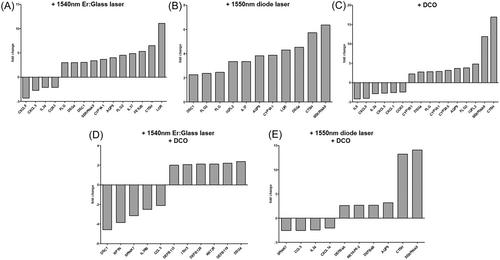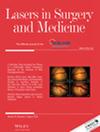Biological effect of laser-assisted scar healing (LASH) on standardized human three-dimensional wound healing skin models using fractional non-ablative 1540 nm Er:Glass or 1550 nm diode lasers
Abstract
Purpose
In postoperative wound healing after surgical operations or ablative laser treatments, recent studies suggest the timely use of non-ablative fractional laser treatments with the aim to improve wound healing and prevent pathological scar formation. However, the underlying molecular mechanisms are poorly understood. The aim of this study was to investigate the effects of laser-assisted scar healing (LASH) at the molecular level and to combine it with already established wound healing-promoting local treatments.
Methods
We irradiated full-thickness 3D skin models with a fractional ablative Er:YAG laser to set standardized lesions to the epidermal and upper dermal layer. Subsequently, LASH was induced by irradiating the models with either a fractional non-ablative 1540 nm Er:Glass or 1550 nm diode laser. In addition, we tested the combination of non-ablative fractional laser treatment and topical aftercare with a dexpanthenol-containing ointment (DCO).
Results
Histological analysis revealed that models irradiated with the 1540 nm Er:Glass or 1550 nm diode laser exhibited accelerated but not complete wound closure after 16 h. In contrast, additional topical posttreatment with DCO resulted in complete wound closure. At gene expression level, both non-ablative laser systems showed similar effects on epidermal differentiation and mild anti-inflammatory properties. The additional posttreatment with DCO enhanced the wound-healing effects of LASH, especially the upregulation of epidermal differentiation markers and anti-inflammatory cytokines at the gene expression level.
Conclusion
This in vitro study deciphers the biological effects of LASH with a fractional non-ablative 1540 nm Er:Glass or a 1550 nm diode laser in 3D skin models. These data help to better understand the biological properties of the LASH technique and is important to optimize its application.

| 公司名称 | 产品信息 | 采购帮参考价格 |
|---|

 求助内容:
求助内容: 应助结果提醒方式:
应助结果提醒方式:


